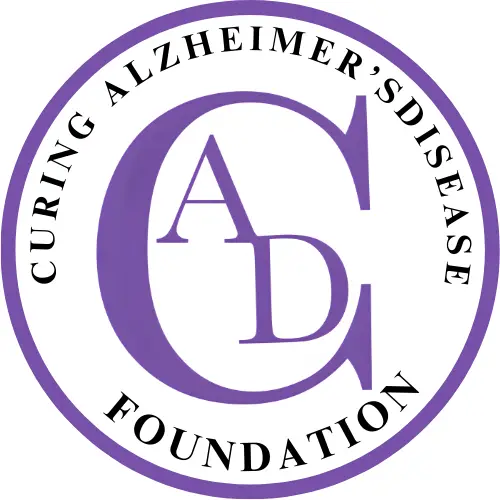Know Your Alzheimer's Risks

Understanding what places you at higher risk for developing Alzheimer's is the first step toward prevention
Your Top Risks
For Developing Alzheimer's
(based on current research and study)
Risk #1: Age
Fact: Age is the single greatest risk factor for dementia and Alzheimer’s disease. As we grow older, the "tight junctions" that form the protective blood-brain barrier begin to loosen. This weakening allows larger and potentially harmful agents—such as viruses, bacteria, and fungi—to bypass this defense and enter the brain, an area typically regarded as biologically "privileged."
At the same time, our body's cells, including critical immune cells, lose efficiency in combating these invaders. These immune cells, which once could swiftly contain an infection before it reached the brain, become less effective with age. The combination of a compromised barrier and diminished cellular defense significantly raises the likelihood of developing neurodegenerative diseases, such as dementia and Alzheimer’s.
Understanding how aging alters brain protection mechanisms underscores the importance of preventive measures and early dementia diagnosis. By being aware of how age contributes to cognitive decline, individuals can take proactive steps to reduce the risk of dementia.
Risk #2: Downs Syndrome
Research shows that over 50% of individuals with Down syndrome will develop Alzheimer’s disease, a significantly higher rate than the general population. Although less than 1% of Americans have Down syndrome, their elevated risk highlights a vital area of dementia research.
One notable finding is the high prevalence and severity of periodontal disease in this group—a condition also linked to increased dementia risk. This comorbidity offers compelling clues about the role of chronic inflammation in the development of Alzheimer’s.
We’ll delve deeper into this connection in upcoming blog posts as part of our ongoing commitment to understanding the many predisposing factors of Alzheimer disease.
One notable finding is the high prevalence and severity of periodontal disease in this group—a condition also linked to increased dementia risk. This comorbidity offers compelling clues about the role of chronic inflammation in the development of Alzheimer’s.
We’ll delve deeper into this connection in upcoming blog posts as part of our ongoing commitment to understanding the many predisposing factors of Alzheimer disease.
Risk #3: Gum Disease
If we described Periodontal Disease (PD) without naming it, you might think we were talking about Alzheimer’s disease. Like Alzheimer's, PD is often painless and goes undetected until significant damage has occurred. It's a chronic inflammatory disease that produces “plaque”—a sticky and destructive biofilm that shields harmful bacteria from being cleared by the body.
This oral inflammation is more than just a dental issue; studies now link periodontal disease with increased risk for dementia and Alzheimer, due in part to the bacteria and toxins entering the bloodstream and potentially crossing the blood-brain barrier. This is especially concerning given that PD is considered an age-related condition, with its incidence rising significantly as people grow older.
As Alzheimer research explores new frontiers, connections between gum disease and Alzheimer’s continue to emerge. This makes dental care a surprisingly vital part of strategies on how to prevent dementia and maintain cognitive health. Awareness and treatment of periodontal disease may be one of the simplest and most accessible ways to help reduce the risk of dementia over time.
This oral inflammation is more than just a dental issue; studies now link periodontal disease with increased risk for dementia and Alzheimer, due in part to the bacteria and toxins entering the bloodstream and potentially crossing the blood-brain barrier. This is especially concerning given that PD is considered an age-related condition, with its incidence rising significantly as people grow older.
As Alzheimer research explores new frontiers, connections between gum disease and Alzheimer’s continue to emerge. This makes dental care a surprisingly vital part of strategies on how to prevent dementia and maintain cognitive health. Awareness and treatment of periodontal disease may be one of the simplest and most accessible ways to help reduce the risk of dementia over time.
Risk #4: Gender
When it comes to developing Alzheimer’s disease, the odds are significantly higher for women. Statistically, women are twice as likely to be diagnosed with Alzheimer's as men, and often experience symptoms earlier in life. This striking gender disparity highlights a major—but often overlooked—risk factor for dementia.
One of the most critical biological events contributing to this difference is menopause, which brings a sudden and dramatic drop in estrogen levels. Estrogen is believed to have protective effects on brain function, so its loss may increase susceptibility to cognitive decline and the onset of Alzheimer symptoms.
Interestingly, this gender gap begins to level out only in the eighth decade of life. By the time both men and women reach their 80s, their risk of developing Alzheimer’s becomes relatively equal. Until then, however, gender remains a key variable in assessing dementia risk factors.
Understanding how hormonal changes impact brain health is a growing focus in dementia research, especially in studies looking at how to prevent Alzheimer’s disease and identify predisposing factors of Alzheimer disease early in life.
One of the most critical biological events contributing to this difference is menopause, which brings a sudden and dramatic drop in estrogen levels. Estrogen is believed to have protective effects on brain function, so its loss may increase susceptibility to cognitive decline and the onset of Alzheimer symptoms.
Interestingly, this gender gap begins to level out only in the eighth decade of life. By the time both men and women reach their 80s, their risk of developing Alzheimer’s becomes relatively equal. Until then, however, gender remains a key variable in assessing dementia risk factors.
Understanding how hormonal changes impact brain health is a growing focus in dementia research, especially in studies looking at how to prevent Alzheimer’s disease and identify predisposing factors of Alzheimer disease early in life.
Risk #5: Autoimmunity
Autoimmune conditions—such as Diabetes, Hashimoto’s Thyroiditis, Sjogren’s Syndrome, and Rheumatoid Arthritis (RA)—do more than affect the body; they can also impact brain health. Individuals with one autoimmune disease are approximately 25% more likely to develop another, suggesting a systemic vulnerability potentially tied to faulty immune regulation.
Emerging studies now reveal that people with autoimmune disorders have a nearly 10% increased risk of developing Alzheimer’s dementia, and a 28% higher risk of developing Vascular Dementia. These statistics underscore why researchers are increasingly exploring the theory that Alzheimer’s disease may be, in part, an autoimmune reaction occurring within the brain.
This hypothesis is gaining traction in recent research on dementia, with findings suggesting that immune dysfunction could be a major contributor to the onset of cognitive decline. As part of our commitment to advancing understanding and prevention, the Alzheimer research we support will incorporate this growing body of evidence to help identify predisposing factors of Alzheimer disease and explore potential dementia cure breakthroughs.
Emerging studies now reveal that people with autoimmune disorders have a nearly 10% increased risk of developing Alzheimer’s dementia, and a 28% higher risk of developing Vascular Dementia. These statistics underscore why researchers are increasingly exploring the theory that Alzheimer’s disease may be, in part, an autoimmune reaction occurring within the brain.
This hypothesis is gaining traction in recent research on dementia, with findings suggesting that immune dysfunction could be a major contributor to the onset of cognitive decline. As part of our commitment to advancing understanding and prevention, the Alzheimer research we support will incorporate this growing body of evidence to help identify predisposing factors of Alzheimer disease and explore potential dementia cure breakthroughs.
Risk #6: Genetics
While many assume Alzheimer’s disease is inherited, the truth is that 77% of late-onset cases (diagnosed after age 65) occur without a family history, suggesting genetics aren't always the driving factor.
However, the APOE-4 gene tells a different story. Individuals with two copies of this variant face up to a 60% risk of developing Alzheimer’s by age 85. Fortunately, this high-risk gene is becoming less common—just 2–3% of Americans are now APOE-4 homozygous, as our species evolves toward the safer APOE-3 gene, now found in 60% of the population.
This insight is pushing advances in Alzheimer gene testing, dementia research, and personalized prevention strategies. While not all cases are hereditary, knowing your genetic risk could help guide early intervention and support the search for an Alzheimer’s disease cure.
However, the APOE-4 gene tells a different story. Individuals with two copies of this variant face up to a 60% risk of developing Alzheimer’s by age 85. Fortunately, this high-risk gene is becoming less common—just 2–3% of Americans are now APOE-4 homozygous, as our species evolves toward the safer APOE-3 gene, now found in 60% of the population.
This insight is pushing advances in Alzheimer gene testing, dementia research, and personalized prevention strategies. While not all cases are hereditary, knowing your genetic risk could help guide early intervention and support the search for an Alzheimer’s disease cure.

